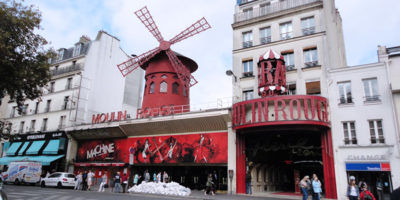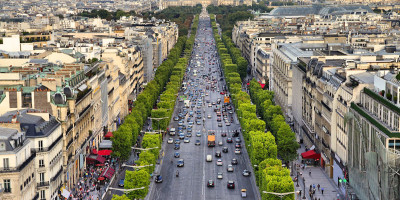
Photo by Həlimə from Wikimedia
Top 10 Remarquable Facts about Nizami Museum of Azerbaijan Literature
Located in the central uptown part of Baku, The National Museum of Azerbaijan literature is considered one of the greatest and richest treasuries of Azerbaijani culture. It was established in 1939 and it is named after Nizami Ganjavi, a 12th-century Persian poet.
The museum has a number of relics like the manuscript of Nizami’s Eskandar Nameh in the Persian Language, personal autographs, and much more documents. It also houses scientific research and other materials focusing on the rich culture and literature of Azerbaijan.
Let’s look at some of the top 10 remarkable facts about this great museum.
1. Nizami Museum of Azerbaijan Literature was established in 1939
Nizami Museum of Azerbaijan Literature was established on November 1, 1939, following the order of the Council of People’s Commissars of Azerbaijan.
The building was reconstructed and expanded and was renamed to Nizami memorial museum of Azerbaijani Literature. It was designed by Latif Kerimov during the 800th anniversary of the great Persian poet Nizamiganjavi who it is named after.
It opened its doors to its visitors after the victory in the Great Patriotic War in the late1940s. the museum has been overhauled, expanded, and upgraded in numerous times to satisfy the demand of ever-increasing visitors.
2. The museum building was once a hotel

Photo by Sefer Azeri from Wikimedia
The history of the Museum building which catches attention with its charming architectural style at first sight begins in the middle of the 19th century which had been built not far from the Twin gates surrounding Icharishahar in 1850.
According to the chief architect of Baku Gubernia, the second floor was added to the one-stored caravanserai with the order of a former owner of the building. The second floor was designed as a banquet room which was transformed into a hotel in 1915.
It was later used by The Cabinet of Ministers of the Democratic Republic of Azerbaijan as a workplace and lodging. In the late 1920s and early 1930s, the Trade-Union Committee of Azerbaijan was also based at the building.
3. The Museum Exhibitions are Fully Digitized
The stages of development of Azerbaijani literature have found their reflection in the Museum exhibition enriched with innovations, completely computerized, and referred to world standards.
Tourists from all parts of the world visit the Museum of literature with great pleasure. They are attracted by ancient manuscripts, pictures, numismatics, memorabilia of writers, documental photos, sculptures, maps, pieces of applied arts and crafts, and documental photos.
In the innovative exhibition, the guests of the Museum can get acquainted with valuable audio-video materials – various films, fragments of performances, music pieces of well-known Azerbaijani composers, and poetic examples performed by popular actors.
4. It is the Centre of Science Research Institution

Photo by Urek Meniashvili from Wikimedia
The National Museum of Azerbaijani Literature functions as a Museum and the center of culture and Research Institution – the hearth of science.
It Collects research and stores scientific and other materials about Azerbaijani literature and culture. Presentation of these materials at expositions and exhibitions is the main goal of the museum. There are carried out great scientific researches, published and written books and monographs.
A number of accomplished scientists work and carry out research for various projects at the museum making it a center of excellence in the field of science.
5. The Museum is the Custodian of Azerbaijan Literature
The earliest development of Azerbaijani literature is closely associated with Anatolian Turkish, written in Perso-Arabic script. Examples of its detachment found in the museum date to the 14th century or earlier.
Several major authors helped to develop Azerbaijani literature from the 14th century until the 17th century and poetry figures prominently in their works. Towards the end of the 19th century, popular literature such as newspapers began to be published in the Azerbaijani language.
Modern Azerbaijani literature is almost exclusively produced in the Republic of Azerbaijan and despite being widely spoken in Iran.
6. The Museum Houses the Sculptures of Eminent Peoples

Photo by Urek Meniashvili from Wikimedia
Nizami Museum of Azerbaijan Literature is home to the sculptures of eminent Azerbaijani poets and writers which were placed on the façade of the museum.
They include the sculpture of Muhammad Fazuli, a famous 16th-century poet, Mammadguluzadeh, who is considered to be one of the first women’s rights activists in Azerbaijan and the Middle East and Molla Panah, an 18th-century Azerbaijani poet and the founder of the realism genre in the Azerbaijani poetry
There are also 120000 exemplars of the museum exhibits stored in the fund of the museum
A manuscript of Nizami’s Eskandar Nameh in the Persian language, which was written in 1413, exemplar of a manuscript of Fuzuli’s “Bangu-Bade “The Eastern poem about Pushkin’s decease” of Mirza Fatali Akhundov, personal autographs, and other exhibits.
7. It neighbors the Fountains Square
Nizami Museum of Azerbaijan Literature neighbors the famous Fountains Square, a public square in downtown Baku. The square was previously called Parapet and is often referenced to by the same name now.
The name of the fountains square derives from the presence of dozens of fountains throughout the square first constructed during Soviet rule of Azerbaijan.
It is a public gathering place, especially after business hours and during the weekend. The fountain square is also a location where the city authorities hold many public festivals, shows, and celebrations.
8. Visit the Azerbaijan National Museum of Art

Photo by Rhajizada from Wikimedia
Azerbaijan National Museum of Art is situated in the heart of Baku in one of the most beautiful ancient residences of the 19th century.
The museum collection contains more than 19 000 exhibits, including rare samples of different artistic styles and periods both of national and world culture making it very appealing for art lovers, specialists, and regular visitors.
The museum presents to its guests a great opportunity to meet the largest collection of national paintings and graphics, following a process of formation and development of the mainstream and underground styles, interrelated with difficult historical processes of the region.
9. Explore Azerbaijan National Carpet Museum
Another popular museum located in Baku is the Azerbaijan National Carpet museum. it displays Azerbaijani carpets and rugs with historical and modern weaving techniques and materials. It has the largest collection of Azerbaijani carpets in the world
The museum also holds a collection of over 10,000 items of ceramics, metal works of the 14th century, jewelry from the Bronze Age, carpets, and carpet items from the 17th-20th centuries, national garments and embroidery, and applied artworks of the Modern Age.
10. Discover Stone Chronicle Museum
Stone Chronicle Museum is a museum dedicated to the history of stone plastics in Azerbaijan. Many types of stone plastic are exhibited in the museum.
The Stone Chronicle Museum, located on the National Flag Square, was created by the Heydar Aliyev Foundation. The most archaic features of moral life in Azerbaijan were found in plastic stone traditions.
Besides numerous examples of stone plastic discovered in different places of Azerbaijan, a large part of ancient exhibits are made up of various household items with functional meaning and no decorations.

 English
English










